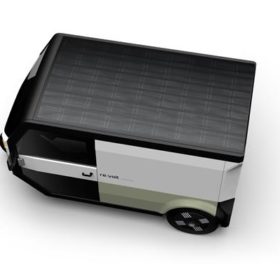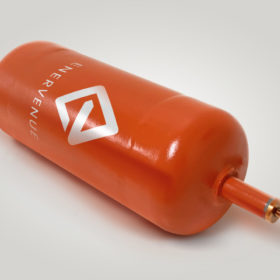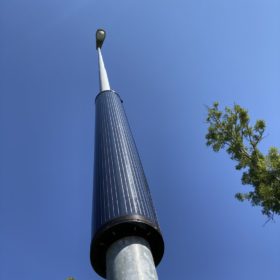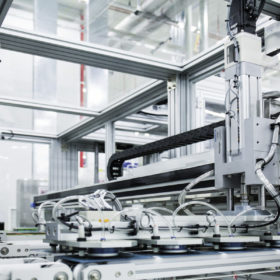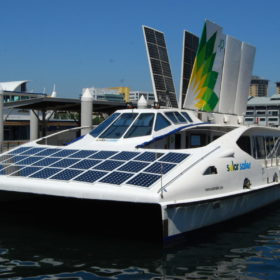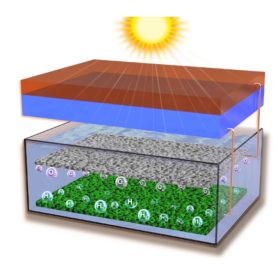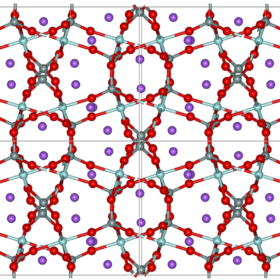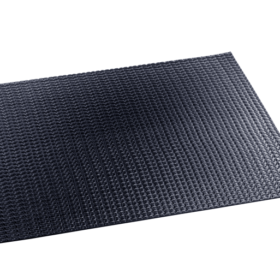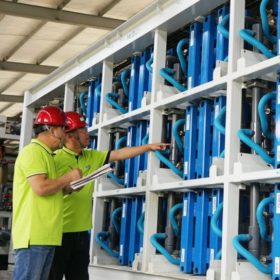Solar-powered delivery van with 400 km range
Swedish start-up Clean Motion is seeking to commercialise an electric delivery van that is also powered by IBC solar modules placed on its roof. The vehicle is claimed to have a 400 km range, of which up to 130 km are provided by the PV array.
Nickel-hydrogen battery for large scale renewables
U.S. start-up EnerVenue has secured funding to build a gigafactory to produce nickel-hydrogen batteries for large scale renewable and storage applications. The battery has an efficiency ranging from 80 to 90%, depending on the cycle rate, and its energy density per square foot is equal to, or better than lithium-ion batteries, according to the company.
Semi-transparent organic solar cell for window applications
Developed by U.S. scientists, the 10%-efficient device is intended for applications in solar windows and promises efficiencies close to 15%. According to its creators, the cell retained 80% of its efficiency after 1,900 hours at 55 degrees Celsius.
Cylindrical solar panel for street lighting
Developed by an Italian manufacturer, the panel is available in three versions with a power output of 100, 120, and 240 W and has a weight of 5 kg. It is encapsulated in thermoformable plastic technical polymers and can be connected in series with other modules around the same post.
Hanwha Q Cells unveils plan to produce perovskite, TOPCon solar modules
The US$1.28 billion (AU$1.7 billion) plan includes a 3.1 GW production capacity expansion in South Korea, where the company’s solar module capacity will reach 7.6 GW by 2025.
What seawater and salt spray can do to a PV system
Researchers in China have analysed how the marine environment influences the performance of PV modules deployed on ships, and have found that salt particles can be detrimental to their performance as these act as both heating agents and a factor reducing solar irradiance. The temporary cooling effect provided by seawater is not sufficient to offset the impacts of salt spray and ensure increased power yields.
Australian researchers develop direct solar-to-hydrogen generation tech
Developed by Australian scientists, the demonstrated system is claimed to achieve a solar-to-hydrogen efficiency of 20% at a levelised cost of hydrogen (LCOH) of $4.10/kg. The direct solar hydrogen generation technology is powered by a tandem perovskite-silicon solar cell with an unprecedented high open-circuit voltage of 1.271 V, and a power conversion efficiency of 24.3%.
Novel chemistry hybrid flow battery: non-aqueous, high-voltage, and crossover-free
Scientists in the United States claim to have created a crossover-free, high-voltage, non-aqueous hybrid flow battery with a novel chemistry for the solid sodium anode. The device has shown a high working voltage of around 2.6 V and a coulombic efficiency of 95.0%.
Flexible solar panel for vehicle-integrated applications
Called SolFlex, the frameless panel is based on 22%-efficient solar cells and is designed for high, one-sided heat load. The standard product measures 100x100x2.9cm, weighs in at 3.4kg, and has a power output of 170 W.
Work begins on 100 MW/500 MWh vanadium flow battery in China
The storage project is linked to a 1 GW wind and solar project portfolio, 500 MW of solar distributed generation, and the construction of a gigafactory for vanadium redox flow batteries in China.

